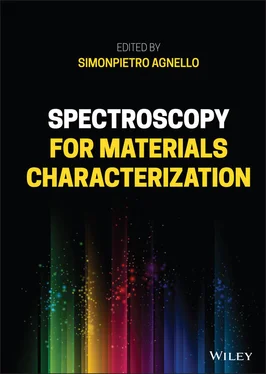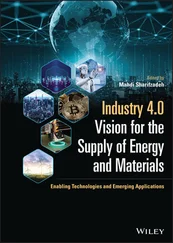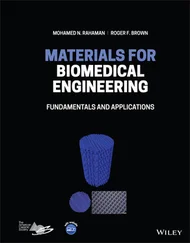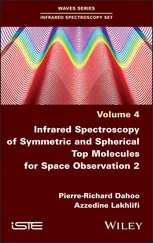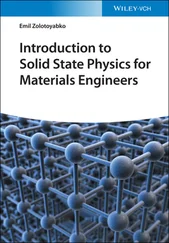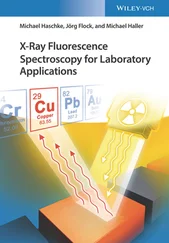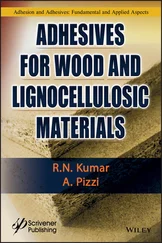Spectroscopy for Materials Characterization
Здесь есть возможность читать онлайн «Spectroscopy for Materials Characterization» — ознакомительный отрывок электронной книги совершенно бесплатно, а после прочтения отрывка купить полную версию. В некоторых случаях можно слушать аудио, скачать через торрент в формате fb2 и присутствует краткое содержание. Жанр: unrecognised, на английском языке. Описание произведения, (предисловие) а так же отзывы посетителей доступны на портале библиотеки ЛибКат.
- Название:Spectroscopy for Materials Characterization
- Автор:
- Жанр:
- Год:неизвестен
- ISBN:нет данных
- Рейтинг книги:5 / 5. Голосов: 1
-
Избранное:Добавить в избранное
- Отзывы:
-
Ваша оценка:
- 100
- 1
- 2
- 3
- 4
- 5
Spectroscopy for Materials Characterization: краткое содержание, описание и аннотация
Предлагаем к чтению аннотацию, описание, краткое содержание или предисловие (зависит от того, что написал сам автор книги «Spectroscopy for Materials Characterization»). Если вы не нашли необходимую информацию о книге — напишите в комментариях, мы постараемся отыскать её.
Learn foundational and advanced spectroscopy techniques from leading researchers in physics, chemistry, surface science, and nanoscience Spectroscopy for Materials Characterization,
Simonpietro Agnello
Spectroscopy for Materials Characterization
Spectroscopy for Materials Characterization — читать онлайн ознакомительный отрывок
Ниже представлен текст книги, разбитый по страницам. Система сохранения места последней прочитанной страницы, позволяет с удобством читать онлайн бесплатно книгу «Spectroscopy for Materials Characterization», без необходимости каждый раз заново искать на чём Вы остановились. Поставьте закладку, и сможете в любой момент перейти на страницу, на которой закончили чтение.
Интервал:
Закладка:
320 319
321 320
322 321
323 322
324 323
325 324
326 325
327 326
328 327
329 328
330 329
331 330
332 331
333 332
334 333
335 334
336 335
337 336
338 337
339 338
340 339
341 340
342 341
343 342
344 343
345 344
346 345
347 346
348 347
349 348
350 349
351 351
352 352
353 353
354 354
355 355
356 356
357 357
358 358
359 359
360 360
361 361
362 362
363 363
364 364
365 365
366 366
367 367
368 368
369 369
370 370
371 371
372 372
373 373
374 374
375 375
376 376
377 377
378 378
379 379
380 380
381 381
382 382
383 383
384 384
385 385
386 386
387 387
388 388
389 389
390 390
391 391
392 392
393 393
394 394
395 395
396 396
397 397
398 398
399 399
400 400
401 401
402 402
403 403
404 405
405 406
406 407
407 408
408 409
409 410
410 411
411 412
412 413
413 414
414 415
415 416
416 417
417 418
418 419
419 420
420 421
421 422
422 423
423 425
424 426
425 427
426 428
427 429
428 430
429 431
430 432
431 433
432 434
433 435
434 436
435 437
436 438
437 439
438 440
439 441
440 442
441 443
442 444
443 445
444 446
445 447
446 448
447 449
448 450
449 451
450 452
451 453
452 454
453 455
454 456
455 457
456 458
457 459
458 460
459 461
460 462
461 463
462 464
463 465
464 466
465 467
466 468
Spectroscopy for Materials Characterization
Edited by
Simonpietro Agnello
Department of Physics and Chemistry – Emilio Segrè
University of Palermo
Palermo
Italy

This edition first published 2021
© 2021 by John Wiley & Sons, Inc.
Published by John Wiley & Sons, Inc., Hoboken, New Jersey
Published simultaneously in Canada.
All rights reserved. No part of this publication may be reproduced, stored in a retrieval system, or transmitted, in any form or by any means, electronic, mechanical, photocopying, recording or otherwise, except as permitted by law. Advice on how to obtain permission to reuse material from this title is available at http://www.wiley.com/go/permissions.
The right of Simonpietro Agnello to be identified as the author of the editorial material in this work has been asserted in accordance with law.
Registered Office John Wiley & Sons, Inc., 111 River Street, Hoboken, NJ 07030, USA
Editorial Office 111 River Street, Hoboken, NJ 07030, USA
For details of our global editorial offices, customer services, and more information about Wiley products visit us at www.wiley.com.
Wiley also publishes its books in a variety of electronic formats and by print‐on‐demand. Some content that appears in standard print versions of this book may not be available in other formats.
Limit of Liability/Disclaimer of Warranty In view of ongoing research, equipment modifications, changes in governmental regulations, and the constant flow of information relating to the use of experimental reagents, equipment, and devices, the reader is urged to review and evaluate the information provided in the package insert or instructions for each chemical, piece of equipment, reagent, or device for, among other things, any changes in the instructions or indication of usage and for added warnings and precautions. While the publisher and authors have used their best efforts in preparing this book, they make no representations or warranties with respect to the accuracy or completeness of the contents of this work and specifically disclaim all warranties, including without limitation any implied warranties of merchantability or fitness for a particular purpose. No warranty may be created or extended by sales representatives, written sales materials or promotional statements for this work. This work is sold with the understanding that the publisher is not engaged in rendering professional services. The advice and strategies contained herein may not be suitable for your situation. You should consult with a professional where appropriate. Neither the publisher nor author shall be liable for any loss of profit or any other commercial damages, including but not limited to special, incidental, consequential, or other damages. The fact that an organization, website, or product is referred to in this work as a citation and/or potential source of further information does not mean that the publisher and authors endorse the information or services the organization, website, or product may provide or recommendations it may make. Further, readers should be aware that websites listed in this work may have changed or disappeared between when this work was written and when it is read. Neither the publisher nor authors shall be liable for any loss of profit or any other commercial damages, including but not limited to special, incidental, consequential, or other damages.
For general information on our other products and services or for technical support, please contact our Customer Care Department within the United States at (800) 762‐2974, outside the United States at (317) 572‐3993 or fax (317) 572‐4002.
Wiley also publishes its books in a variety of electronic formats. Some content that appears in print may not be available in electronic formats. For more information about Wiley products, visit our web site at ww.wiley.com.
Library of Congress Cataloging‐in‐Publication Data Applied for
ISBN: 9781119697329
Cover design by Wiley
Cover image: © khalus/gettyimages
Preface
Ten years of experience in a basic laboratory course of spectroscopy for master’s students in physics as well as some courses for PhD students in physics and materials science together with more than 20 years of experimental work in physics and materials science convinced me of the opportunity to join the different basic aspects and technical approaches for the characterization of materials in a book. My contact with scientists in physics, chemistry, engineering, biology, and many other research fields emphasized the need to collect accurate and broad knowledge on spectroscopic techniques both from the fundamental point of view and from the technical perspective to impart the skills required to think about experiments, to interpret their results, and last but not least to advance theoretical knowledge. Motivated by these aspects, I started the project by inviting different experts in the various fields of spectroscopy, usually employed in the study of materials from the nanoscale up to the macroscopic scale and also in the field of astrophysics. In general, any atom, molecule, or condensed phase up to a solid needs to be characterized, from the species identification to structural definition and electron dynamics. Consequently, this practice‐oriented handbook collects the presentation of different spectroscopic techniques nowadays used to carry out experiments and is thought for master’s students, PhD students, and researchers who are not yet experts in the field of spectroscopy. Each chapter is a standalone contribution dedicated to a different technique and is composed of a basic theory introduction at a level adapted to students, plus more advanced information for experts. Then, details about the characteristic instrumental features and apparatus are considered, aiming to give hints for the appropriate arrangement of a typical experiment and, in some cases, for the understanding of the choice of an instrumental setup and the selection of technical features. Each chapter is completed by case studies that can be reproduced by employing commercially available or laboratory‐prepared samples, or by examples of applications mainly from the above‐cited fields of materials science, chemistry, and engineering. Furthermore, hints for the deepening one’s understanding of the topic with more specialist books are given along the way.
Читать дальшеИнтервал:
Закладка:
Похожие книги на «Spectroscopy for Materials Characterization»
Представляем Вашему вниманию похожие книги на «Spectroscopy for Materials Characterization» списком для выбора. Мы отобрали схожую по названию и смыслу литературу в надежде предоставить читателям больше вариантов отыскать новые, интересные, ещё непрочитанные произведения.
Обсуждение, отзывы о книге «Spectroscopy for Materials Characterization» и просто собственные мнения читателей. Оставьте ваши комментарии, напишите, что Вы думаете о произведении, его смысле или главных героях. Укажите что конкретно понравилось, а что нет, и почему Вы так считаете.
